We grabbed some huckleberry malt shakes at the Moab Creamery. We had only ordered one (to share) but the girl had made extra and just gave it to us for free... so we basically ended up having two shakes. We grabbed a local paper and read up on things to do.

Reading the local paper...

... which included a whole section on "Cowboy Happenings."
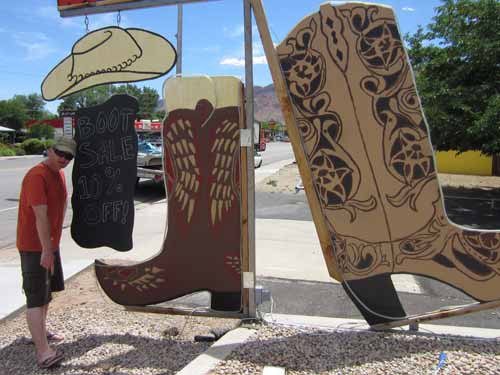
Regan considers getting 'bigger' shoes.... unfortunately the store was closed for lunch.
Around the corner was the tourist center... which was air-conditioned and had free internet. So we spent a bit of time resting there. While browsing all the free brochures, we came across one on the numerous local petroglyphs. And so we decided to head back out into the heat and track a few of them down.
Rock art was produced by many prehistoric and historic people of thousands of years. The first people in the area, known as Paleo-Indians, hunted things like mammoths and mastadons (10,000 BC - 5,500 BC). They were replaced by the Archaic, nomads who lived in small caves and brush shelters (5,500 BC - 1 AD). Later, the Anasazi arrived moved in and harvested crops of corn, beans and squash (1 AD - 1275). The Fremont, who were around at the same time in this area, were more hunters and gathers (450 - 1250). Both these groups are referred to as "Formative" cultures. The Utes are the most recent inhabitants, since the 1200's. These nomadic people hunted in this area until around 1880, when they were forced onto reservations.
The images themselves help date when they were drawn. For example, anything with a horse and rider must be after 1540, when the Spanish reintroduced the horse to the New World. Bows and arrows indicate a date after the year 500.
Our first stop was near the golf course and fancy homes. The tall rock wall had many little shapes scratched into the desert varnish. The images are from the Formative Period (1 AD - 1275) and include human figures. There are also animals such as elk, bighorn sheep and dogs.

Both petroglyphs (carved into the desert varnish) and pictographs (using paint made of minerals or plants) were used, but only the petroglyphs have survived.
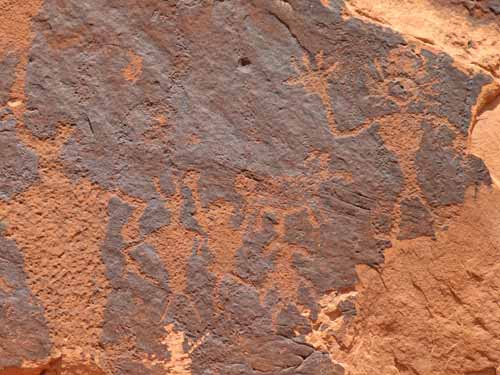
Everyone seems to be waving. A friendly folk perhaps?

Unfortunately there was ample modern graffiti... including bullet holes.



A sled being pulled by reindeer... hmmm.

A lizard uses the rock to escape the hot afternoon sun.
We left the city and drove along the river. There were a couple stops here, although we only actually found two. Even with directions, it was hard to find tiny scratchings on cliff upon cliff of red rock.
The rock panel at Moon Flower Canyon dates back to the Archaic and Formative Periods. There are people, animals and abstract images, ranging from 1 to 12 feet high and covering 100 feet long. Logs were often used to reach higher spots. The images possibly represent visions, clan symbols or are recorded events.



The second site:


Note the graffiti


The road turned to gravel and headed up into the canyon. After a couple miles, we arrived at a large rock with art covering all four sides. These ranged from the Formative to the Ute periods.
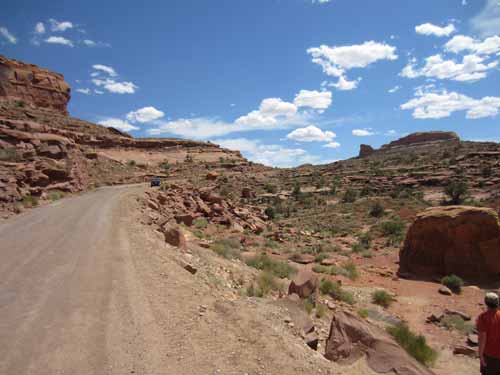



Someone feels their name is equally important to add to this rock.


A birthing scene, with the baby coming out feet first

A centipede


We tried to find a few more in town, but were unsuccessful. So we decided that was enough rock art for the day and that now dinner should be the priority.
We stopped at the Moab Diner, a cute little 1950's-style place.
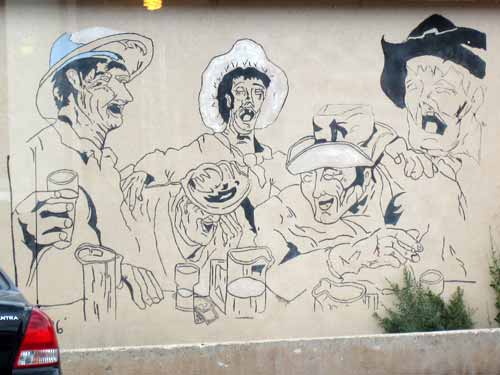
The artwork outside

Complete with neon lights

Poor Kokopelli gets used for everything. In many Native American cultures in the Southwestern US, he is a fertility deity as well as the spirit of music and trickery. But his image is plastered over every tourist site.... and that now apparently includes menus as a type of chicken.
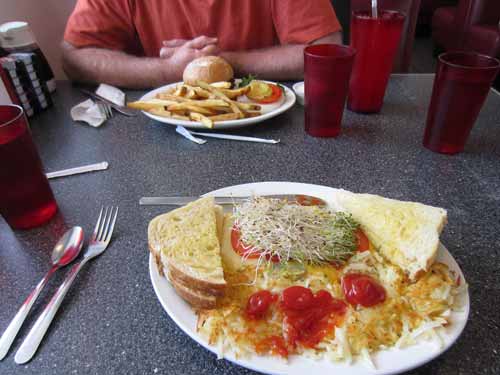
Our giant meals

When our server took our order, she asked Regan if he wanted Ranch Dressing on the side, to which he responded 'yes' quite delightedly. I asked if they had that in New Zealand and he was missing it. He said he'd never heard of it and had no idea what it was, but with a name like that, he just had to try it!
There were still several hours of daylight remaining, but we were quite tired from the heat. So we headed back to camp. Regan took a short swim in the river while I lay in the shaded tent watching the clouds roll in overhead.

A peaceful evening by the river

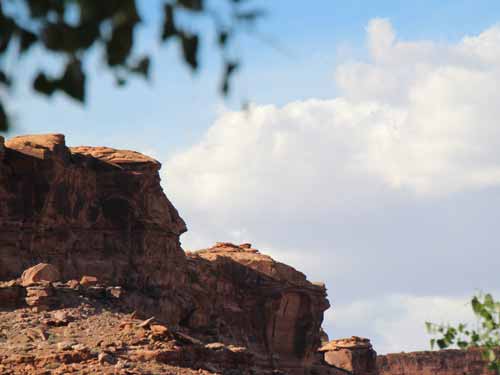
The clouds slowly roll in.

